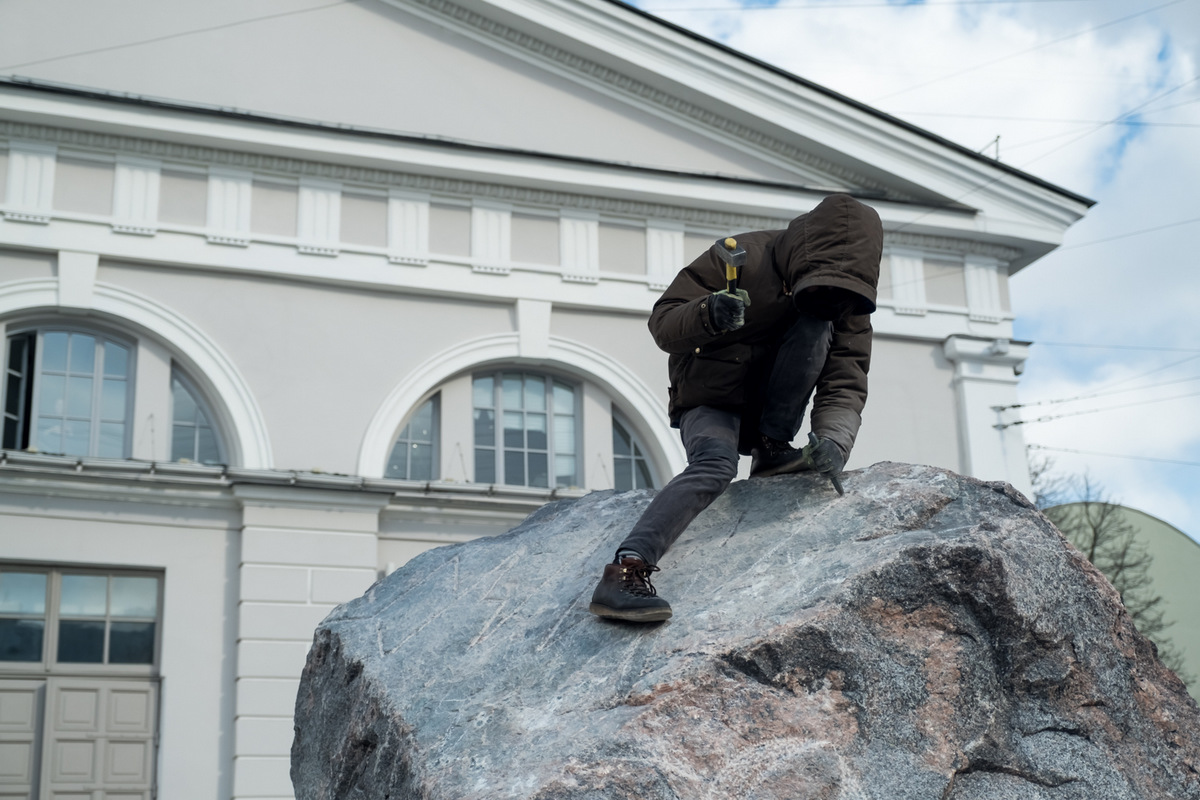New Ruins. Granite - Urban Art Project in St.Petersburg

For the second street project in its New Ruins series, Manege Central Exhibition Hall invited six artists who have all abandoned what could be called a classic graffiti narrative. Moving away from common statements associated with street art, they began to explore other age-old means of artistic expression.
Image: New Ruins. Granite urban art project, courtesy to Manege Central Exhibition Hall, St.Petersburg
For the second street project in its New Ruins series, Manege Central Exhibition Hall invited six artists who have all abandoned what could be called a classic graffiti narrative. Moving away from common statements associated with street art, they began to explore other age-old means of artistic expression.

New Ruins. Granite urban art project, courtesy to Manege Central Exhibition Hall, St.Petersburg
For this urban art project, all of them worked with stone, carving images using hammers and chisels – a technique rarely employed by street artists today.

New Ruins. Granite urban art project, courtesy to Manege Central Exhibition Hall, St.Petersburg
But this “primitive” technique is exactly what enables the artists to overcome the impermanent nature of street art and imbue an artistic vision with a genuine monumental quality. While associated with the past, stone carving also provides an opportunity to enter the future.

New Ruins. Granite urban art project, courtesy to Manege Central Exhibition Hall, St.Petersburg
New Ruins is a comprehensive study on the way street art interacts with the architecture and layout of a historic city.

New Ruins. Granite urban art project, courtesy to Manege Central Exhibition Hall, St.Petersburg
What’s more, it provides an opportunity to consider what we might today regard as an unconventional approach.
